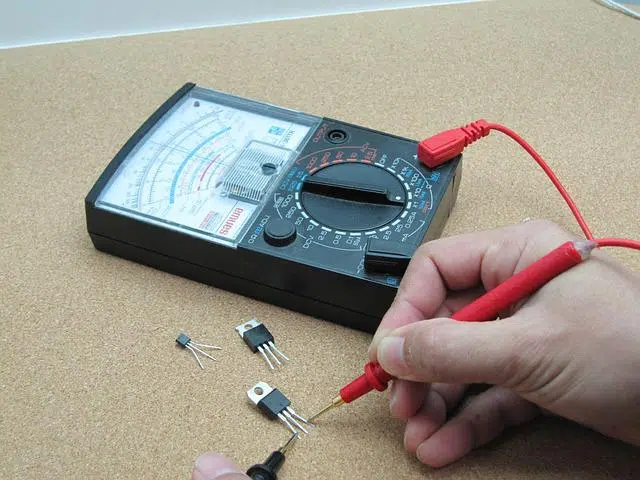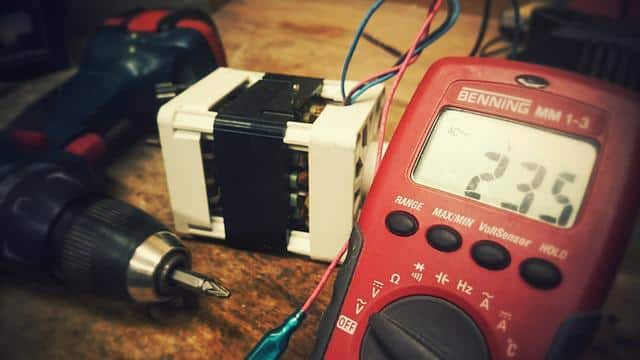
The multimeter can measure passive and active quantities.
The multimeter is a device used to measure electrical quantities . These instruments can be used with alternating current or direct current .
Measures passive and active magnitudes
Also known as a tester or multimeter , the multimeter can measure passive quantities (such as resistance ) or active quantities (such as voltage ). There are analog multimeters and digital multimeters .
Multimeters use galvanometers , which can record the intensity of very small electrical currents. The galvanometer completes a certain electrical circuit for the measurement of various magnitudes.
Modes and applications
Due to its characteristics, the multimeter can work in different ways. As an ohmmeter , it is capable of measuring resistance in ohms. As a voltmeter , it is used to measure the potential difference between points in an electrical circuit . Another type of multimeter is to act as an ammeter , measuring the intensity of currents.
In the ideal plane, a multimeter as a voltmeter draws no current and has infinite input resistance. Likewise, as an ideal ammeter, the multimeter registers no voltage drop and has zero input resistance. The characteristics of real equipment, however, are different.
In some cases, multimeters can offer additional features. Being used to test telephone lines, checking the electronic circuits of a car or functioning as an oscilloscope are some of the possibilities .
Security measures
It is important to note that, as a safety mechanism, multimeters usually have one or two fuses . This allows the device to not be damaged if excess current is produced. Such a problem can occur if the configuration is carried out on an inappropriate scale. It is also possible to get probes that integrate the fuses.
Among the most common mistakes when handling a multimeter is establishing a configuration for measuring intensity or resistance but using it directly with a voltage source. A multimeter that does not have fuses will not take long to break down if we do this. This safety component is the one that melts in case of error , so it must have a tolerance equivalent to the maximum of the multimeter itself.
Since safety measures are never perfect, over the years some multimeters have come on the market whose fuses were not adequate to protect the device, and this led to the establishment of official categories to guarantee the robustness and safety of each model. .
History of the multimeter
When talking about the origin of this device we must mention the avometer (or AVO ), which inspired the development of the multimeters we know today. In the name of this predecessor of the multimeter we find the conjunction of three other devices: the ammeter , the voltmeter and the ohmmeter . The idea was from the British engineer Donald Macadie , who through its creation intended to facilitate the tasks of all electronics students.

A digital multimeter, the culmination of an early 20th century invention
It is important to note that the avometer is also known as the AVO multimeter , and that its arrival on the market took place in the early 1920s, by the Automatic Coil Winder and Electrical Equipment Company (whose acronym, ACWEECO , is also particularly extensive) , the company that bought the project. Its first version could not measure alternating current, but only direct current. Several models came out, with some improvements such as the possibility of measuring power and capacity, until the last one was presented in 1951.
After the launch of the latest model of AVO multimeter, the company adopted a new name, considerably shorter and easier to memorize: AVO Limited , which directly evokes its successful product. The brand was used for other instruments over the years. They later changed the company's name again, with Megger Group Limited being the most recent.
